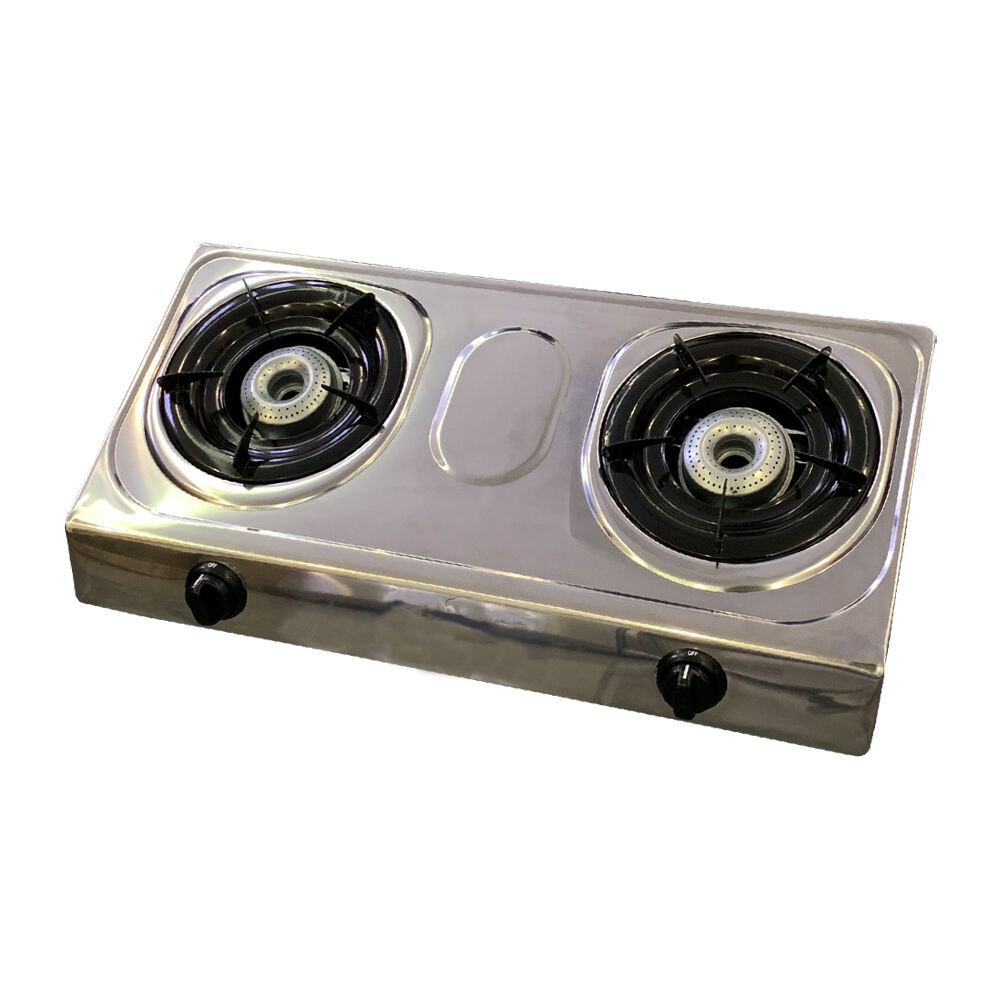Optimizing Flame Stability for Hybrid Gas Stove Models with Multiple Burners
Factors Affecting Flame Stability in Hybrid Gas Stoves
Burner Configuration and Heat Distribution Patterns
Different burner configurations significantly influence heat distribution patterns, which in turn affect the efficiency and flame stability of hybrid gas stoves. The size, arrangement, and construction materials of the burners are critical factors that influence how heat is conducted. For instance, an optimal configuration of burners can distribute heat evenly across the cooking surface, minimizing hotspots and enhancing flame uniformity. A study by the American Society of Mechanical Engineers highlights that such configurations can mitigate localized overheating, which often leads to unstable and inefficient flames. Understanding these patterns is essential for designing stoves with improved operational performance, ensuring they meet both culinary and safety standards.
Airflow Dynamics Across Multiple Burners
Airflow dynamics are crucial for maintaining a stable and efficient flame in hybrid gas stoves. To achieve this, it's essential to examine how air is drawn from the environment and distributed over the stove's burners. Proper airflow facilitates optimal combustion, reducing fluctuations that might cause the flames to flicker or behave erratically. Research indicates that well-designed airflow systems can significantly enhance not only combustion efficiency but also the operational safety of the stove. By ensuring a steady flow of air, stoves can maintain consistent flames, which are vital for efficient and controlled cooking.
Fuel Pressure Consistency in Hybrid Systems
Consistent fuel pressure is another fundamental factor for achieving stable flame output in hybrid gas stoves. Fluctuating fuel pressure can lead to uneven flame heights and instability, which inevitably affects cooking performance and safety. The National Fire Protection Association emphasizes the importance of maintaining proper fuel pressure for both the efficiency and safety of gas stoves. Regular monitoring and necessary adjustments are advised to ensure that pressure levels remain within the optimal range. This approach can help prevent potential hazards and ensure reliable stove performance, allowing for a more efficient cooking experience.
Advanced Techniques for Optimizing Flame Stability
Precision Airflow Adjustment Mechanisms
Precision in adjusting airflow is crucial for optimizing the combustion conditions in hybrid gas stoves, leading to improved flame stability. This can be achieved through mechanisms such as adjustable vents or variable speed fans, which allow for fine-tuning of the airflow. Engineering journals have demonstrated that precise airflow control not only enhances the efficiency of the stoves but also facilitates safer operation. Moreover, integrating user-friendly systems for airflow adjustments can greatly enhance both user experience and safety, making it easier for users to manage the stove effectively in diverse culinary settings.
Dual-Fuel Integration Strategies
Integrating dual-fuel systems offers a significant advantage in maintaining flame stability by providing alternative fuel options. Such systems permit seamless switching between gas and another fuel, ensuring consistent performance even during fluctuations in supply. Industry analysts note that hybrid gas stoves equipped with these capabilities generally receive higher customer satisfaction rates due to enhanced cooking reliability and flexibility. Utilizing dual-fuel strategies not only improves flame stability but also augments kitchen adaptability, catering to varied cooking needs and environments, thereby increasing overall cooking efficiency.
Thermal Sensor Calibration Methods
Calibration of thermal sensors plays an indispensable role in monitoring and adjusting flame conditions accurately. Proper calibration ensures that sensors deliver precise data regarding temperature fluctuations, which is critical for effective control mechanisms in stoves. Studies have shown that well-calibrated thermal sensors can substantially decrease energy consumption, leading to more efficient operation. It is advisable to perform regular maintenance and calibration checks to ensure optimal performance of the stove’s thermal sensors, thereby maintaining consistent flame stability and enhancing energy efficiency.
Combustion Chamber Pressure Monitoring
Monitoring the pressure within the combustion chamber is imperative for maintaining fuel combustion efficiency, which directly impacts flame stability. A sudden pressure drop can indicate issues that might lead to instability, necessitating immediate adjustments. Research underscores that effective monitoring of combustion chamber pressure significantly enhances the safety and performance of gas stoves. Implementing pressure sensors as part of this monitoring system allows users to detect potential problems early, preventing them from escalating into larger issues and ensuring smooth and stable stove operation.
Hybrid Gas Stove Models Engineered for Stable Performance
LQ-GS506 Gas Stove: Multi-Scenario Stability Features
The LQ-GS506 model is designed to excel in various cooking environments, showcasing remarkable adaptability and consistency in flame stability. Its innovative burner technology plays a crucial role in maintaining uniform heat distribution, regardless of the cooking method employed. This advanced design, coupled with reliable reviews from users, demonstrates its capability in handling complex cooking tasks, providing assurance of its stable performance in demanding conditions.
BDZ-180A Gas Stove: Bucket Design for Steady Flames
The BDZ-180A gas stove is a testament to engineering prowess with its unique bucket design that significantly enhances flame stability. This design facilitates superior fuel and air mixing, resulting in a consistently uniform flame that outperforms conventional models. Third-party testing has confirmed its outstanding stable performance, while customer feedback highlights its ease of maintenance, making it a popular choice among users seeking reliability and efficiency.
KB5 Gas Stove: Compact Configuration Optimization
Designed for environments where space is a premium, the KB5 gas stove features a compact configuration that doesn't compromise flame stability. Its engineering ensures even heat distribution, maintaining competitive performance on par with larger models. Industry evaluations praise its optimized performance, and user testimonials frequently applaud its suitability for smaller kitchens, showcasing its versatility in varied settings.
Maintenance Practices for Sustained Flame Stability
Nozzle Cleaning Frequency Guidelines
Regular nozzle cleaning is crucial for maintaining optimal fuel flow and ensuring efficient combustion in your gas stove. To prevent issues such as blocked nozzles and fluctuating flames, it's recommended that regular users clean their nozzles at least once a month. Neglecting this maintenance practice can lead to reduced performance and even safety hazards due to inconsistent flames. Industry best practices support the use of specific cleaning solutions that are designed for gas stove components, ensuring that the cleaning process is both effective and safe.
Burner Port Inspection Protocols
Inspecting burner ports regularly is essential in keeping them free from debris and obstructions, which can affect performance and safety. Scheduled inspections, ideally conducted quarterly, are necessary for maintaining the stove's efficiency and reducing fire hazards. These inspections allow users to detect and address potential issues, leading to improved consistency in flame performance. Professionals in the field suggest that detailed inspections of burner ports significantly enhance flame stability and overall stove safety, making this practice a vital part of stove maintenance.
Safety Considerations in Flame Stability Management
Automatic Shutoff Systems for Flame Failure
Automatic shutoff systems are crucial for safely managing flame stability in gas stoves. These systems provide an essential layer of protection by detecting flame loss and promptly shutting off the gas flow, thereby minimizing the risk of explosion or fire. Integrating automatic shutoff systems can significantly enhance kitchen safety, as supported by various research studies and expert recommendations. Regular system checks are essential to maintain their effectiveness and reliability, ensuring that the kitchen remains a safe environment for cooking.
Ventilation Requirements for Hybrid Combustion
Proper ventilation is fundamental for the safe operation of hybrid gas stoves, as it facilitates optimal combustion conditions. Ensuring adequate airflow prevents the accumulation of harmful gases and contributes to overall flame stability. Regulatory guidelines stress the importance of maintaining proper airflow to and from the stove during use. It's important for users to be educated on how to monitor and maintain their kitchen ventilation systems. This education helps prevent hazardous situations and supports the efficient functioning of the stove.










